16 photos of Moscow's beautiful Metro stations, built as propaganda during the time of Stalin
Currently, there are around 200 Metro stations spread out across 12 lines in Moscow. Burdeny picked 30 that he felt were the most visually interesting or historically significant.

It wasn't easy for Burdeny, especially as a foreigner. (He's Canadian.) He spent over a year struggling to get permission through Russian bureaucratic channels. After he saw the stations featured on an episode of the British TV show "Top Gear," he reached out to the producers, who were able to connect him to the right people.
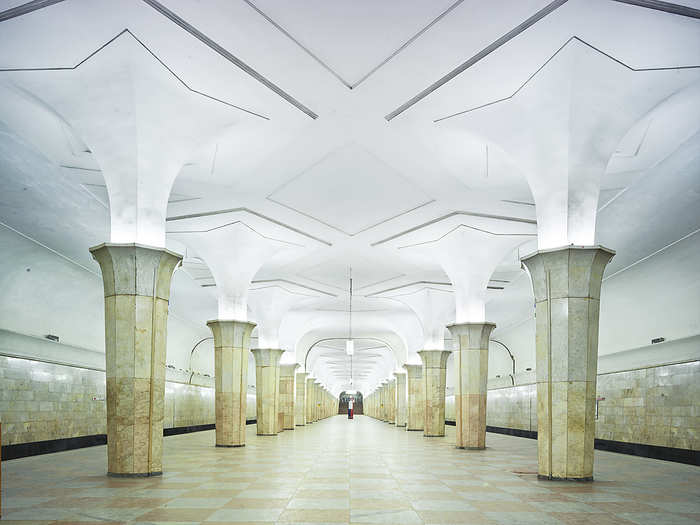
Eventually, he worked out an arrangement where he could rent out stations by the hour over the course of two weeks.
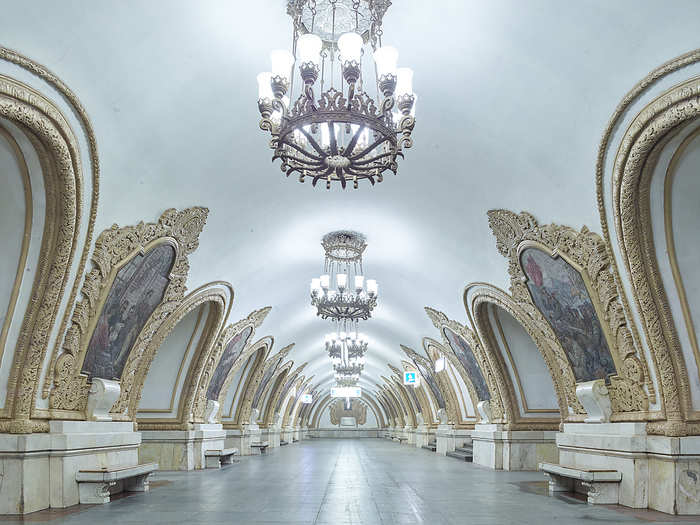
Someone was always watching Burdeny, no matter where he went underground. But as far as he knows, he's the only photographer to ever shoot the stations while they were empty.
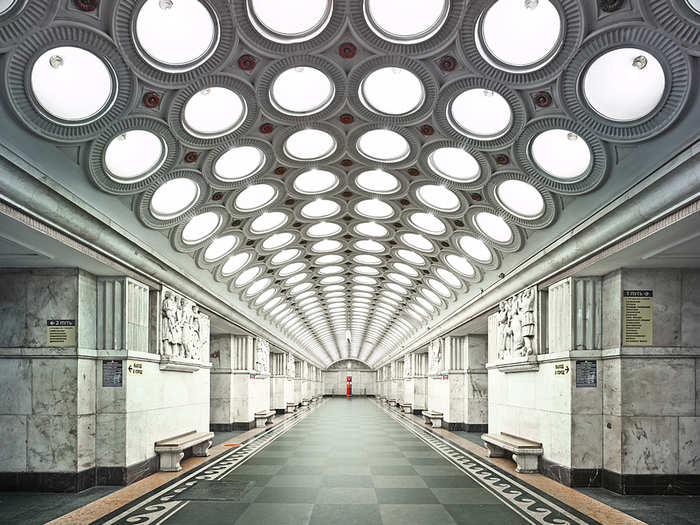
Every night, each of the stations are cleaned in depth. There were usually maintenance crews waiting beyond the view of the frame while Burdeny was shooting.
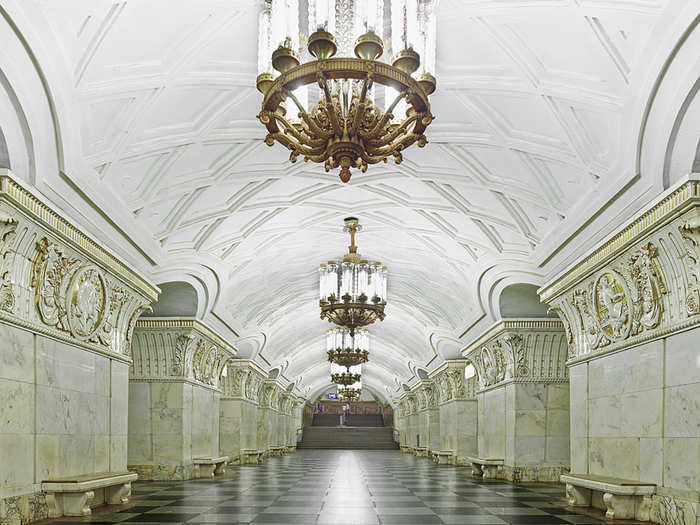
During the time of the Soviet Union, many citizens struggled in communal housing properties above ground. Still, the underground system was spared no expense.
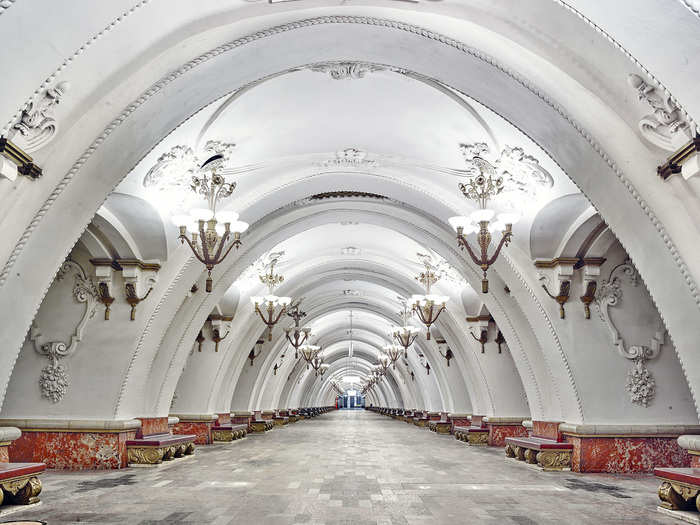
They were designed as Communist propaganda, the brightly lit environments causing people to "look up" at the light of the station — metaphorically looking up to Stalin above ground. Stalin had constructed an idea of himself as God.
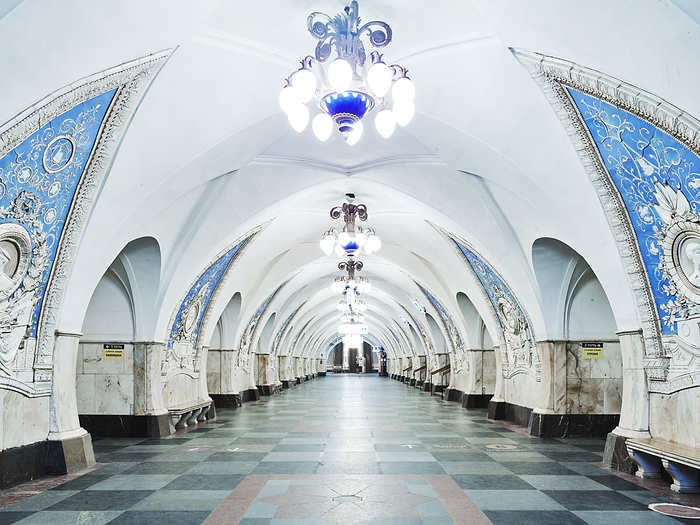
Conceptually and visually, the stations were generally meant to be symbolic "palaces for the people."
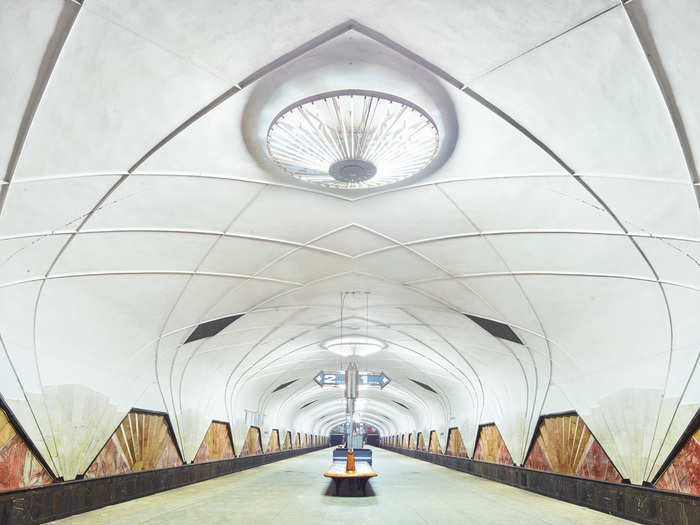
Stalin also wanted to remind the citizens that their tax money was being well spent.
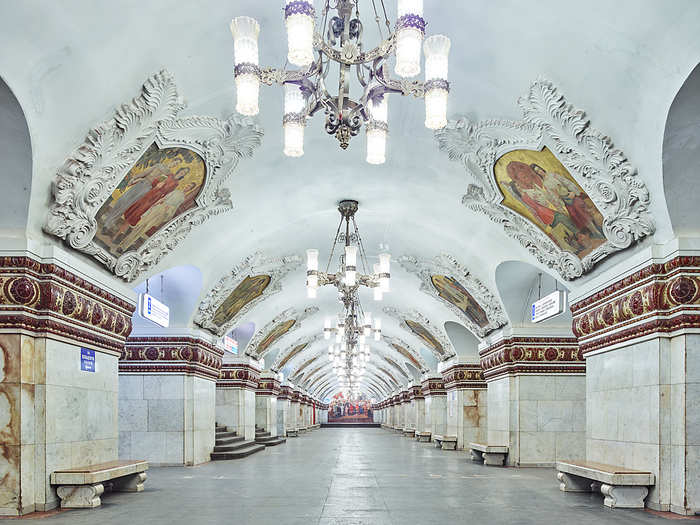
More than 75,000 workers contributed to the stations' design and construction. Their efforts would pay off, as the Metro's beauty was instantly noticed by citizens and visitors alike.
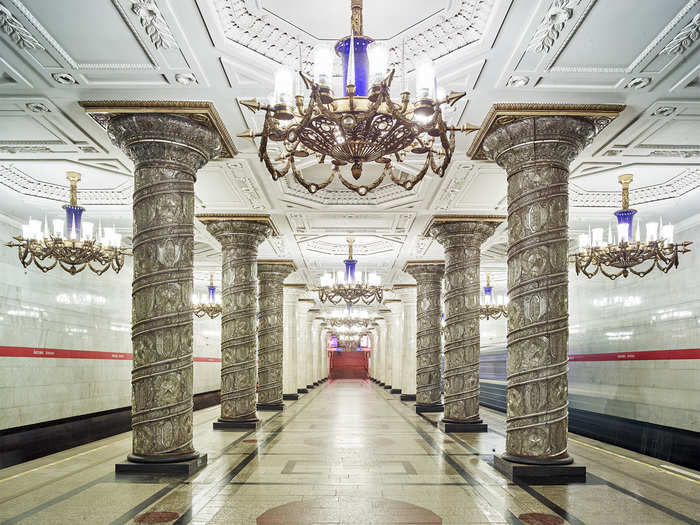
Source: Hyperallergic
According to the introduction to Burdeny's book, "A Bright Future," when Sir Ernest Simon, a British politician and industrialist, visited Russia in the year after the underground was unveiled, he said, "In medieval days, the whole people of a town joined together to build a cathedral. So in Moscow the people joined to build the Metro, and regard it today as a thing of beauty, their common achievement, their common possession."
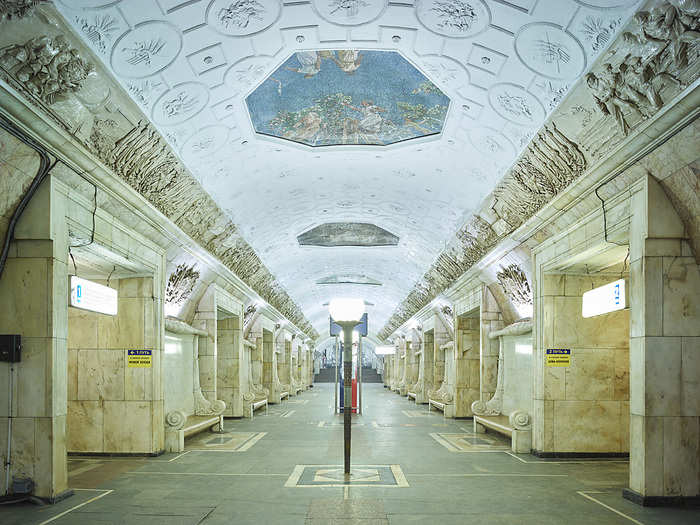
Source: "A Bright Future"
The styles of the architecture of the stations ranged from Rococo to Art Deco to constructivism. They are also reminiscent, design-wise, of palaces from the pre-Soviet Russian Empire.
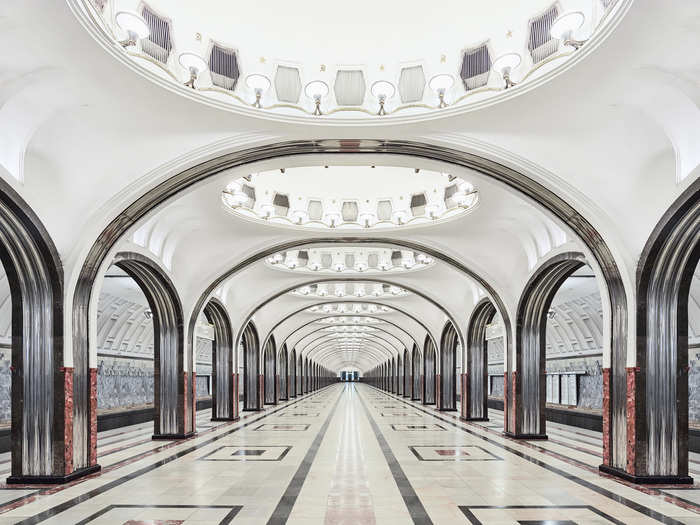
A second set of stations were launched in 1938, three years after the first.
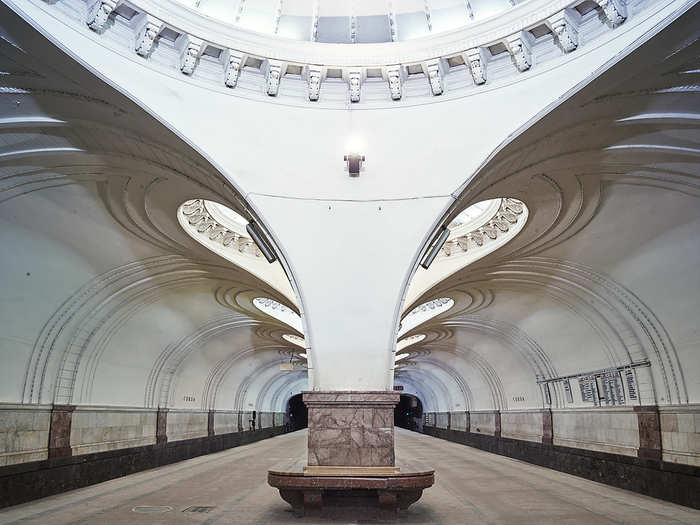
Although it might have been hard to imagine, the second round of stations were even more sophisticated and detailed than the first. New materials were introduced, including gold, mosaics, and 14 different varieties of marble.
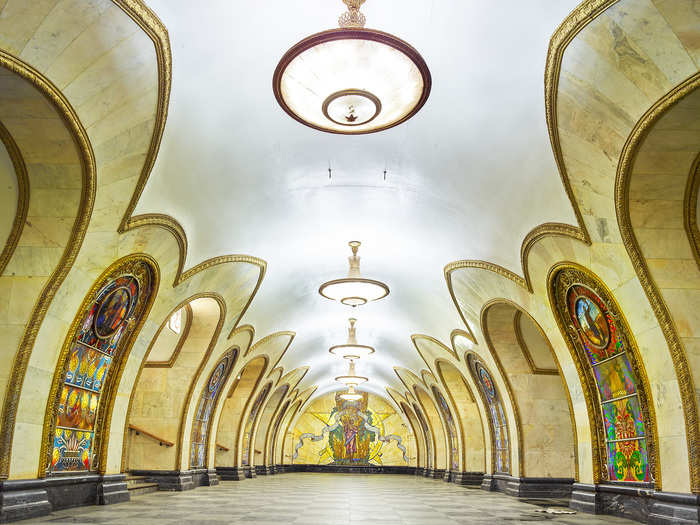
A third round of stations was opened in 1944, and a fourth in 1952. Stalin died in 1953, and soon after, a decree was passed from the Communist Party that essentially asked construction crews to avoid any extravagance in the design of future stations. They also removed statues and photos of Stalin.
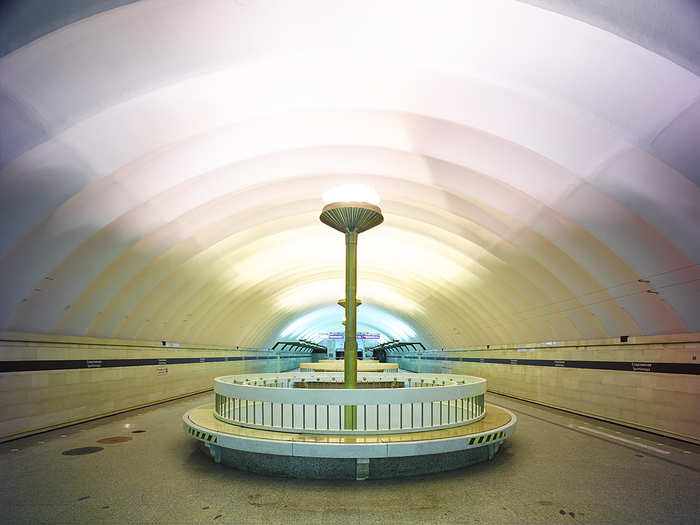
Certain stations have weathered time better than others. The main ones, however, are given a lot of careful attention and respect by the population.
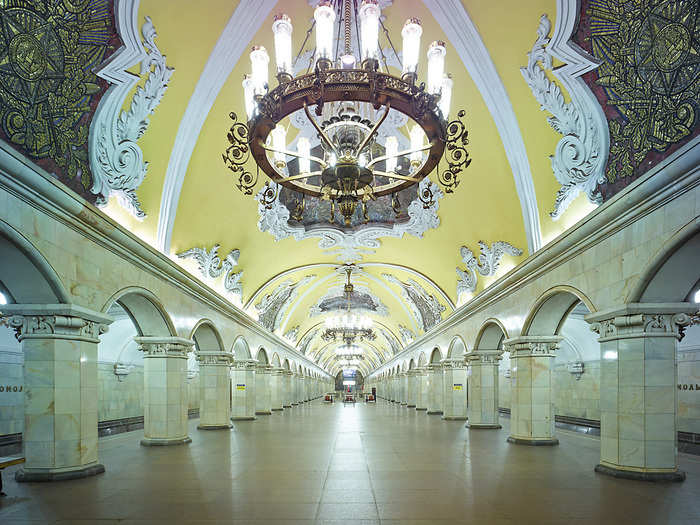
Popular Right Now
Popular Keywords
Advertisement